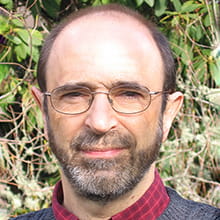Santiam Canyon Community Health Impact Assessment
This community health assessment project, conducted in fall 2021, examined the needs of the communities affected by the 2020 Labor Day wildfires, and provided recommendations for addressing the ongoing health-related needs of wildfire survivors.

Project final report
Our final report has been completed. It can be accessed and downloaded here:
A Community Health Impact Assessment of the Santiam Canyon (pdf)
News

The Seattle Times
2020 wildfire survivors report health problems, housing woes
An Oregon State University study found that survivors of the 2020 Labor Day wildfires in Santiam Canyon still reported breathing problems, health problems and trouble finding housing a year after the fires.

Salem Reporter
Santiam Canyon wildfire survivors face chronic stress, trauma amid uncertainty about future
Hundreds of people displaced by the Beachie Creek and Lionshead fires are still struggling to find a permanent place to live more than 16 months after losing their homes. The assessment said people displaced by the wildfires are stressed and concerned about air quality and water supply.

Statesman Journal
Breathing issues among ongoing problems reported by Santiam Canyon wildfire survivors
An Oregon State University survey of Santiam Canyon residents indicated ongoing health problems related to a lack of housing.

Synergies Magazine
Santiam Canyon residents burned out by trauma, red tape
Residents are struggling to find housing, wrestling with government bureaucracy and worried about toxins in the water, air and soil, all while burdened by the trauma of losing their homes.

KLCC
OSU research shows multiple ways wildfire survivors struggle
While it’s been 16 months since the historic Labor Day fires burned through Oregon, many lingering and often troubling effects have been shared by residents.

KBOI-TV
Oregon State University assessment highlights concerns impacting fire survivors
Researchers say the trauma affects survivors from their diets all the way to their relationships.
Project overview
The 2020 Santiam wildfires were devastating to the communities of the Santiam Canyon. They strained the capacities of county and state agencies, local governments, community organizations, nonprofits, and other responding organizations that sought to deliver services and support to the people and businesses that were affected.
This community health assessment project examined the needs of the affected communities and provided recommendations for addressing the ongoing physical and health needs of wildfire survivors. The project also identified the lessons learned from this wildfire disaster and recommended strategies for responding to future wildfires and other emergency events.
Overall study questions
For each of the following areas related to health:
- What needs were created or exacerbated by the Santiam wildfires?
- How have those needs been addressed by government agencies and local organizations?
- What needs still exist?
- Recommendations for how those needs can be best addressed.
Environmental health and physical safety
- Water quality and access
- Air quality and respiratory issues
- Soil quality
- Exposure to other toxins (i.e., other than those related to water, air, and soil quality)
- Heat-related illnesses
Food security and adequate healthy eating
- Availability of affordable and healthy food from commercial sources
- Impacts on household-based food sources (e.g., hunting, gardening)
- Stresses on family finances affecting food security
- Safety of food storage and preparation
Mental and behavioral health; family cohesiveness and security
- Emotional stress
- Depression
- PTSD in parents and/or children
- Alcohol misuse / Drug use
- Children’s psychological, emotional, and social adjustment (e.g., school performance)
Housing
- Housing stability; displacement or homelessness
- Shift from permanent to temporary housing (while remaining on own property)
- Availability of clean water and stable electricity
- Economic pressures; market influences on ability to rebuild
- Injury and physical safety
- Indoor housing quality
Personal health
- Disruptions to sleep or regular physical activity
- Access to medical care, including one’s regular primary care provider and necessary medical procedures for existing conditions
- Access to medication
Project team

Marc Braverman
Professor
OSU College of Health & Extension Specialist, Family and Community Health

Sandi Cleveland Phibbs
Innovation, Evaluation and Research Manager
OSU Center for Health Innovation & OSU College of Health

Amanda Rau
Regional Wildland Fire Specialist
Willamette Valley and Cascades Region, Forestry and Natural Resources Extension, OSU College of Forestry

Elijah Penner
Graduate student researcher
Master of Public Health program, OSU College of Health
If you have questions about this project, or if you are a resident of the Santiam Canyon and would like to share your experience or other information, please email: [email protected]